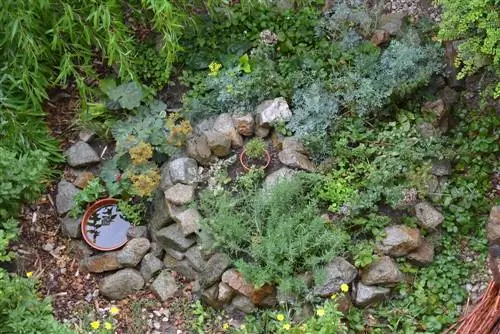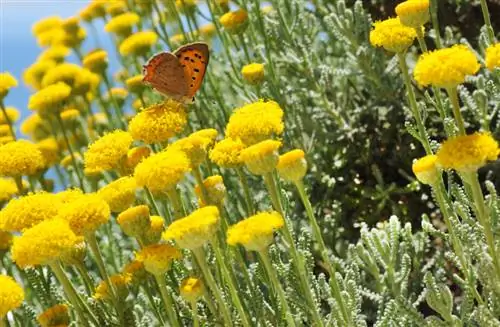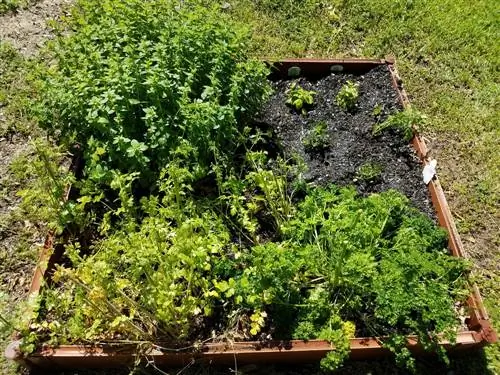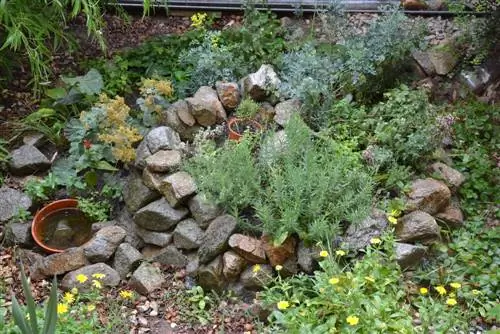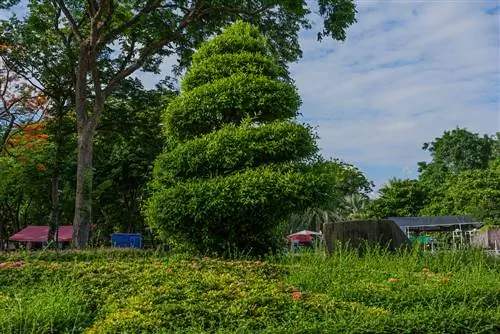- Author admin [email protected].
- Public 2023-12-16 16:46.
- Last modified 2025-01-23 11:21.
The herb snail offers your favorite herbs the perfect conditions for vital growth and an aromatic harvest. Is the right place to plant a type of herb giving you a headache? With these tips for every climate zone, the perfect planting plan for your herb snail is no longer a horticultural mystery. This is how you plant your herb spiral correctly.
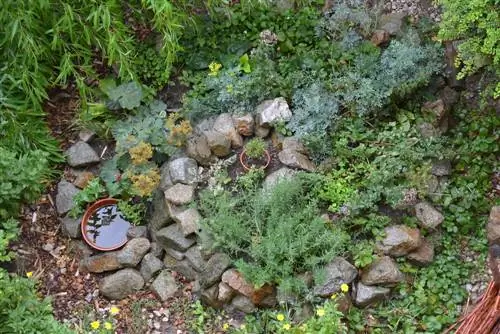
How do I plant a herb spiral correctly?
In a herb spiral, herbs are planted in different climate zones depending on their needs: near water (e.g. B. Watercress, Bachbunge), temperate conditions (e.g. chives, basil) and dry climates (e.g. lavender, rosemary). Space-consuming or invasive herbs should be placed outside the spiral.
Best planting time is in spring
Spring has emerged as the ideal planting time for the herb snail. Especially with frost-sensitive Mediterranean herbs, there is a high failure rate after autumn planting. If you have filled the herb spiral with fresh soil, please wait another 2 weeks so that the substrate can settle.
Tips for planting plans near water
The herb plants at the base of the spiral are very comfortable with the south orientation. A small pond provides plenty of water and there is no shortage of sunshine either. Since the transition between the water zone and the wet area is fluid, the following overview presents recommended herb plants for the planting plan in both regions:
Planting plan for the lower area of the herb snail
| Water Zone | botanical name | Wet zone | botanical name |
|---|---|---|---|
| Watercress | Nasturtium officinale | Wild garlic | Allium ursinum |
| Bachbunge | Veronica beccabunga | Dill, cucumber herb | Anethum graveolens |
| Water Nut | Trapa natans | Indian nettle, golden balm | Monarda didyma |
| Calmus | Acorus americanus | woman's coat | Alchemilla mollis |
| Chives | Allium schoenoprasum | ||
| Sorrel, meadow sorrel | Rumex acetosa | ||
| parsley | Petroselinum crispum |
Please note in the planting plan that there is sufficient distance between tall and short herbs so that no growth-inhibiting shadows are cast.
These herbs love temperate conditions - planting plan for the middle area
In the temperate climate zone, your herb snail can choose from plenty when selecting suitable herbs. Fresh, nutritious and loose garden soil with pleasant semi-shaded lighting conditions encourage a variety of aromatic herbs to achieve peak floral performance. Write down these species and varieties in your planting plan:
- Chives (Allium schoenoprasum)
- Coriander (Coriandrum sativum)
- Basil (Ocimum basilicum)
- Nasturtium (Tropaeolum majus)
- Spice fennel (Foeniculum vulgare)
- Chervil (Anthriscus)
- Pimpinelle (Sanguisorba minor)
- Marigold (Calendula officinalis)
These herbs are on the top floor - planting plan for the dry climate zone
In the upper Mediterranean zone, sun worshipers from the herbal kingdom come into play. Plant Mediterranean herbs here as well as all species with a preference for sandy, dry soil quality. The following overview lists popular aroma artists for your planting plan:
- Lavender (Lavandula angustifolia)
- Sage (Salvia officinalis)
- Rosemary (Rosmarinus officinalis)
- Marjoram (Origanum majorana)
- Dost (Origanum vulgare)
No room for lovage etc. in the herb snail
If space-consuming herbs sneak into the planting plan, trouble is inevitable. Please allocate a place for lovage and comfrey outside the herb snail. The same applies to herbs with invasive root growth or unfavorable root exudates, such as tarragon and wormwood.
Tip
A dry stone wall gives your herb snail the perfect frame. Since the natural stones are put together during construction without mortar, small gaps arise. With the help of plant bags, you can use these cavities as additional planting space. Dwarf herbs or marigolds feel at home here and beautify the appearance.

